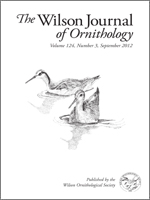We investigated use of capsaicin, a chemical that evolved as a mammal-directed fruit-consumption deterrent for chili (Capsicum annum) fruits as a nest-predation deterrent. Capsaicin is unpalatable to mammals, but apparently undetectable by birds, and has been used as a selective mammal-repellent in several commercial applications. We placed imitation thrush (Turdus spp.) nests containing model and real eggs in a suburban site near Auckland, New Zealand. The majority of observed predation attempts in our experiments were attributed to introduced rats (Rattus spp.) based on comparisons of tooth-marks on damaged plaster eggs and tooth-marks made with rat skulls. Predation rates on imitation eggs treated with adhesive chili powder were lower than predation rates on eggs in other treatments (W = 201, n = 60, P = 0.05), including non-adhesive chili, adhesive paprika (capsaicin-free chili powder), non-adhesive paprika, and untreated eggs. Successive replicates of the same experimental paradigm in the same site revealed the predation rate on all imitation nests decreased with repeated placement of imitation nests and eggs. These results support the potential value for use of capsaicin-treated nests to deter mammalian predators of natural bird nests.
How to translate text using browser tools
1 September 2012
Capsaicin as a Deterrent Against Introduced Mammalian Nest Predators
Shane M. Baylis,
Phillip Cassey,
Mark E. Hauber
ACCESS THE FULL ARTICLE





